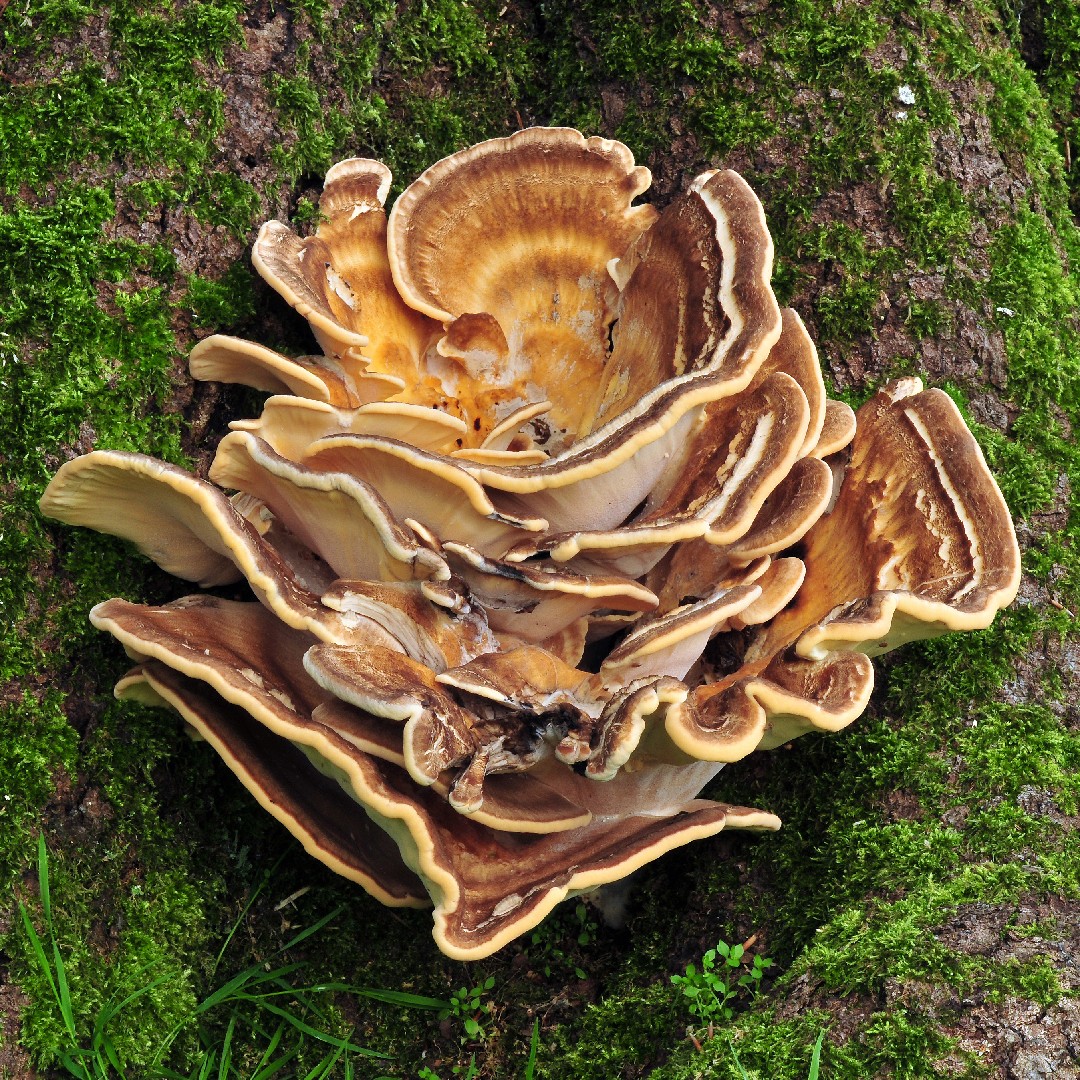Meripilaceae
Scientific name: Meripilaceae
Meripilaceae
Scientific name: Meripilaceae
 Photo By Michael Gäbler , used under CC-BY-3.0 /Cropped and compressed from original
Photo By Michael Gäbler , used under CC-BY-3.0 /Cropped and compressed from original Description
Its most famous species is Grifola frondosa. G. frondosa grows from an underground tuber-like structure known as a sclerotium, about the size of a potato. The fruiting body, occurring as large as 1 m, is a cluster consisting of multiple grayish-brown caps which are often curled or spoon-shaped, with wavy margins and 2 - 8 cm broad. The undersurface of each cap bears about one to three pores per millimeter, with the tubes rarely deeper than 3 mm. The milky-white stipe (stalk) has a branchy structure and becomes tough as the mushroom matures.